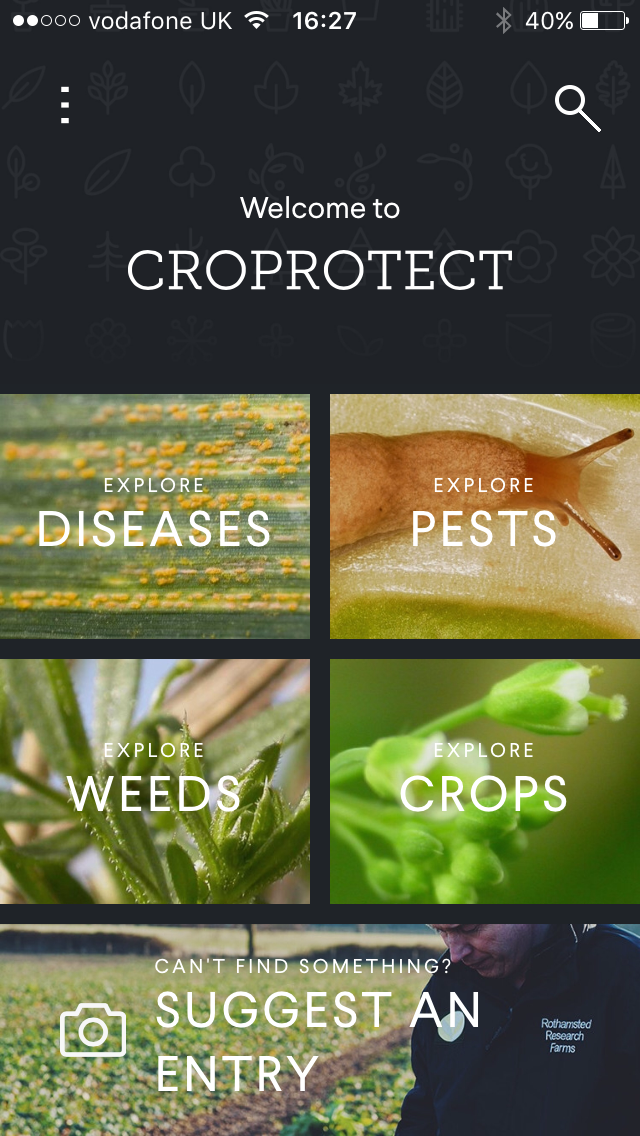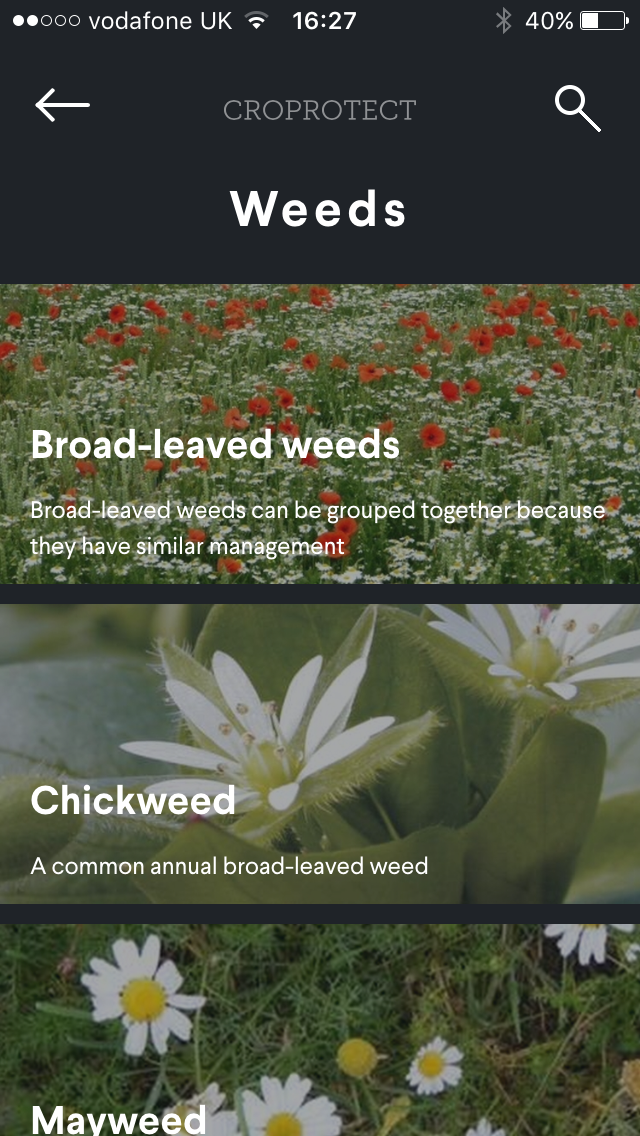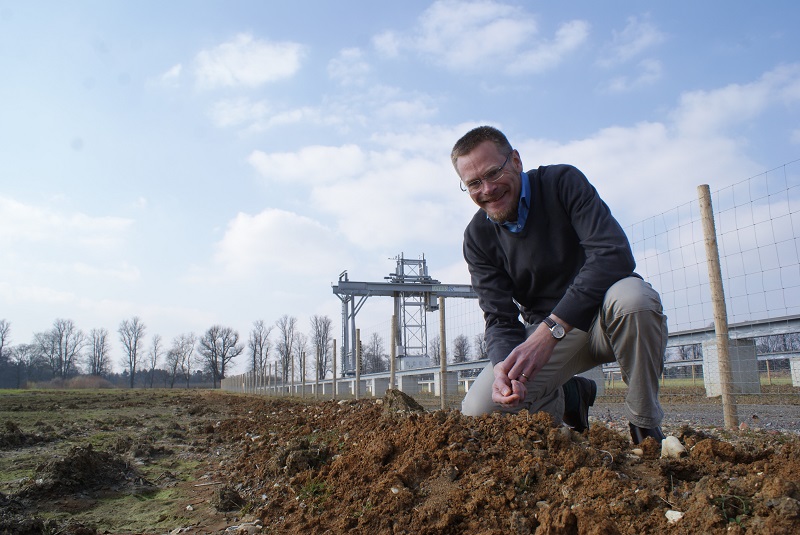
A two-way knowledge exchange is how one Rothamsted Research scientist believes growers and researchers will make the most of integrated pest management. CPM follows the path he’s forged.
By Tom Allen-Stevens
When a group of scientists from Rothamsted Research posted a video on YouTube in April 2012 asking anti-GM protestors not to destroy a trial of aphid-repelling wheat, it marked a turning point in public opinion.
The video went viral and its reach was worldwide, hitting headlines in national newspapers. But its message was simple, earnest and honest: “please don’t destroy years of our work – if you do, we won’t know what this technology has to offer”. This struck a chord in blogs and opinion pieces, which defended the scientists’ quest for knowledge, and they turned instead against the proposed actions of anti-GM campaign group ‘Take back the flour’.
One of the scientists behind the video was Rothamsted entomologist Dr Toby Bruce. “We were just trying to explain our point of view to the protestors. We had no idea the video would attract so much public attention,” he recalls.
“I suppose it was the GM aspect, but this was a public-funded field trial critical to researching a scientific discovery with the potential for clear environmental benefits. We couldn’t understand why someone would want to rule it out before these were even properly considered.”
It’s the same open and earnest quest for environmental improvements and knowledge exchange that Toby Bruce has carried throughout his time at Rothamsted, since he started there in 2000. “I’ve always wanted to be a research scientist and had an interest in nature – Rothamsted opened the door.
“It’s a fascinating life – like being an explorer, never quite sure what you’ll find out and mapping uncharted territory. What’s more, you’re addressing agricultural challenges – a lot of the work involves reducing dependence on pesticides. You’ll never replace them, but we need a second tier of defence, which is where much of what I do is focused.”
Previous research he’s worked on was a Defra-HGCA funded Sustainable Arable LINK project, led by ADAS, investigating a more integrated approach to controlling orange wheat blossom midge. “At the time, it was very difficult to know if you had the pest, so many growers would apply a precautionary spray of chlorpyrifos,” he explains.
“At Rothamsted we were involved in making and testing pheromone traps, and also in trialling resistant wheat varieties. Now resistance has been bred into about 60% of varieties used in the UK and OWBM is rarely seen as a problem, let alone sprayed against.”
Currently he’s working on a project looking at an integrated approach to control pea and been weevil in beans. It’s partially funded by Innovate UK and BBSRC, with additional support from PGRO, BASF, Oecos and Exosect. “It’s known as the ‘lure and kill’ project – we’ve developed a pheromone that attracts them into a part of the crop where you then apply a biological control. We’re a year in, and the results so far suggest the potential for this as an alternative to pyrethroid use is fantastic.
“But it takes time to develop these approaches, and I’m not sure the policy makers appreciate the consequences of restricting pesticides before we have proper alternatives in place – there should be more investment in developing them,” he says.
He’s now leading a public-funded project that aims to do just that, and empower farmers and agronomists with their own approaches to reducing dependence on pesticides. Croprotect is a three-year project, costing £292,000 and funded through the Sustainable Agriculture Research and Innovation Club (SARIC), a joint venture of BBSRC and NERC.
Smartphone app
It’s a web-based knowledge exchange system with guidance on pest, weed and disease management, especially in situations where effective pesticides aren’t available and alternative approaches are required. This centres around a smartphone app that puts Rothamsted and the fruits of its applied research at your fingertips.
“When a conventional pesticide is introduced, its best practice use is all taken care of – the guidance is on the label. But there’s no label guidance for alternative or agronomic approaches to controlling a pest, weed or disease. There’s a pressing need for this, however, under the Sustainable Use Directive (SUD).”
This directive requires farmers to adopt a provision of integrated pest management (IPM) within control programmes. “But for this to work, IPM approaches should be developed, there should be regulation of alternatives, such as biological and semiochemical (e.g. pheromone-based) controls, and there should be an effective knowledge exchange,” maintains Toby Bruce.
He made representations to Defra on these points during the SUD consultation, through his involvement on the biocontrol and IPM group of the Association of Applied Biologists. “You’d think this was obvious, but it didn’t appear so at the time. It’s hard to say how much this submission to the consultation helped, but a research call for a knowledge exchange came in 2014, so I submitted a proposal.”
Toby Bruce’s background is in entomology, but he wanted to ensure his submission covered all areas, so he brought in Dr Stephen Moss on weeds and Dr Jon West on diseases. “It’s important to have expertise on the project that’s field friendly,” he says.
“One thing that’s held back practical adoption of IPM techniques is that researchers in the past haven’t done enough to engage with growers. So this element was clearly outlined in our proposal, and I think it won the bid because this is now seen as important.”
The aim of Croprotect is to bring practical management information on pests, weeds and diseases into one, easily accessible platform. The project started in Nov 2014, and pages are building all the time. But the essential difference about this knowledge exchange is that it’s the users who prioritise the information that’s available, points out Toby Bruce. “The first thing we did was ask people to register and tell us what their priorities were. Then we started building pages.”
One of the first topics, for example, was blackgrass, with information compiled by Stephen Moss. “It’s not necessarily new information, but it brings research-based knowledge into the digital era. Nor will you find endless pages of information – sometimes IPM has a tendency to be over-complicated, and you can get information overload. We’ve aimed to focus on keeping the information concise and straightforward,” he says.
“It’s also curated information, compiled by scientists with specialist authority, rather than some free-for-all Wikipedia. That’s important, not only to gain the trust of users, but also because public-funded work must be peer-reviewed and remain high science – applied science can sometimes be viewed as impure.”
It does provide a platform for users to contribute information, however. Pest and disease incidences can be reported and mapped, for example. Users can contribute commentary on what they’ve found as well as ask agronomic information and views from site curators or other users.
They’ve also helped shape the project, notes Toby Bruce. “Initially, it was going to be just a web-based tool. But I presented it at the AICC conference right at the start of the project, and the feedback from agronomists was that they wanted an app for iPhone and Android users. So that’s what we developed.”
As information is updated and more pages loaded, this is accessible through either app or website. “We’ve built in links to good sources of related information – doing this project has really opened my eyes to valuable online research-based information, such as on the AHDB Cereals and Oilseeds website. It’s sometimes hard to find, though, so we’ve provided links direct to relevant publications or pages.”
But it’s the community involvement element where Toby Bruce reckons most potential lies. “We already have 600 registered users, although it’s not a requirement to register to use Croprotect. The reporting element will become a valuable tool in itself. Crop Monitor has thorough in-season information on disease incidence, for example. But Croprotect potentially can provide hundreds of location points with opportunities for interaction.”
Building the user base when limited marketing budgets are allowed in public-funded projects has been a struggle, he admits. With 18 months of the project still to go, he’s keen to ensure Croprotect continues to grow in terms of both its user base and the information available to growers.
As a keen user of Twitter, however, he’s found a strong community of growers who have been coming on board and helping the service develop. “There’s #clubhectare, for example, while @AgriChatUK has 20,000 users. Many research projects develop in splendid isolation from the end users who’ll directly benefit. With Croprotect, they’re not only involved, they’re helping to shape it. These are the people who will ultimately decide its direction.”
In-field access to research-based knowledge

The Croprotect app gives access to information pages as well as for registered users to feedback information from the field. Links within pages take you direct to relevant pages of related information. https://croprotect.com
How to be an on-farm innovator – Toby Bruce’s top tips
- Make your approach user friendly. Even if complicated science lies behind it, this should be easily accessible.
- Make life easier. Pursue research that offers a neat solution, such as a resistant variety or app.
- It must meet a real need. There should be a policy or practical imperative, such as a new regulation or resistance issue.
- Align your objectives to those of the funders. Getting funding is extremely competitive, so any proposal should clearly meet their requirements.
- Get to know those who’ll benefit. Those who make the time and have the willingness to engage with farmers to develop their ideas make far greater impact with their research.
- Make it flexible and adaptable. Every farm and farmer is different, and locality is important.
- Keep it concise. While the research may be wide ranging and thorough, the take-home messages should be clear and straightforward.
Internet technology is the gateway to good collaborative science
It’s unusual for someone involved in research to embrace a more consultative approach, points out Clare Tucker of BASF. “We have the technology now to communicate to a wider audience more easily and agriculture in general has been slow to make the most of it. With Croprotect, however, Toby Bruce is making the most of apps and other internet tools to consult directly with end users.”
This is valuable in particular in the field of biological sciences. “It’s not so much about what a technology can do, but how it interacts with the environment variables and farming practice. Key to getting good data is having a platform to exchange this information.”
But to manage this sort of platform requires a wide skill set, she says. “You not only need to collect and analyse data and get results. You need to communicate these, and then be confident enough to manage feedback and make appropriate changes to your methodology. It’s a progressive approach that’s been clearly demonstrated here.”
Clare Tucker reckons more collaboration is the key to ensuring the benefits of scientific discovery are delivered onto farms. “First and foremost, you need good independent science, of the level that’s currently funded by BBSRC and AHDB. And the results should be peer-reviewed. This is the sort of research we’re interested in being involved in at BASF, not because it has a positive outcome for our products, but because it helps the industry thrive, which is important for our medium and long-term future.”
How it’s then delivered is also important, she says. “Apps make the information much more accessible than it was – BASF has shown through its involvement with the GAI app, the Weed and Cereal Disease ID apps and the Total Oilseeds app how good, industry-funded science can be turned into practical tools with real on-farm application at local level.
“As we move towards a more integrated approach to managing weeds, pests and diseases, on-farm collaboration will become more important. But good science must remain at the heart of this, so platforms that let the two interact will become more valuable.”
On-farm innovation
Farmers are constantly innovating to improve their businesses, which is why BASF is committed to investing 10% of its sales revenues into R&D to deliver new technologies for farming. BASF’s new innovations include pioneering agricultural chemistry, as well as Innovations Beyond Crop Protection like biologicals, bacteria, soil and water management and renewable technologies. Our future is firmly focused on delivering towards farming’s future.’
its sales revenues into R&D to deliver new technologies for farming. BASF’s new innovations include pioneering agricultural chemistry, as well as Innovations Beyond Crop Protection like biologicals, bacteria, soil and water management and renewable technologies. Our future is firmly focused on delivering towards farming’s future.’




